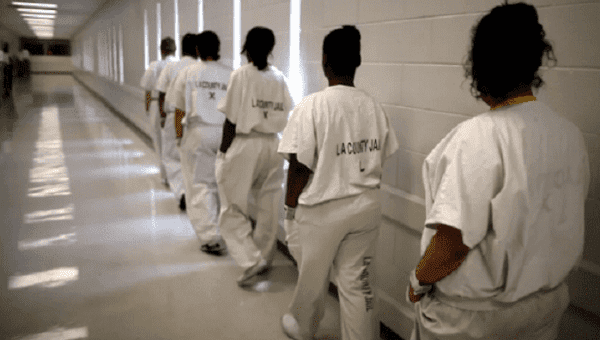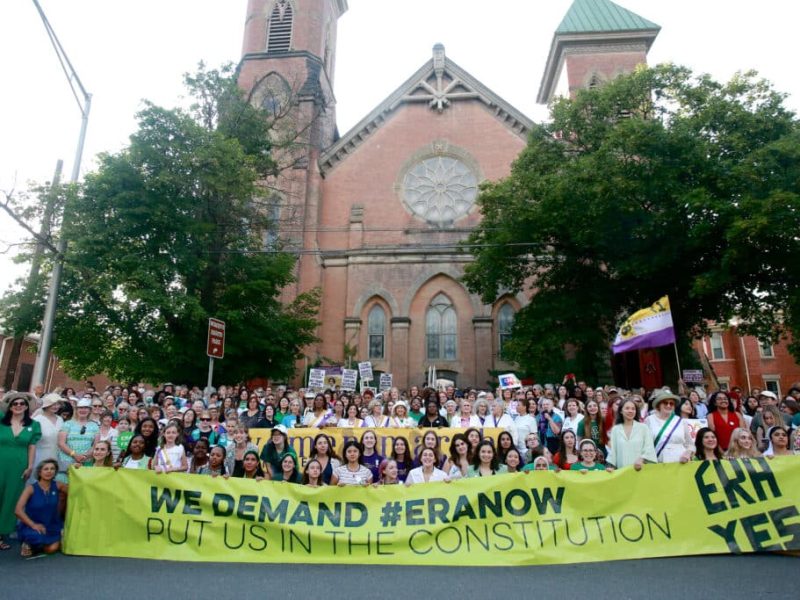
The Fund for Women’s Equality reports that 80 percent of Americans believe women are protected equally under the US Constitution. That is until they, or a woman they know, stand before a judge in a court of law. It is then that they too often realize this is not necessarily the case, and for black women, this is particularly problematic.
While a recent study conducted by the Institute for Women’s Research showed that black women make important and essential contributions to the productivity, wealth and success of our nation, black women also continue to account for the vast majority of incarcerated women. While the overall number of women in prison has dramatically increased from just 26,000 in 1980 to 219,000 in 2017, this spike in female incarceration has disproportionately affected black women. According to The Center for American Progress, they were twice as likely to serve time than white women, and black women between the ages 18 and 19 were three times as likely to serve time as white women of the same age group.
“The lack of an Equal Rights Amendment, which would prohibit the discrimination on the basis of sex, is especially harmful to women of color, who face discrimination both on the basis of sex and the basis of race,” says Bettina Hager, COO and DC Director of the ERA Coalition. “The discrimination women of color face is treated differently depending on which part of their identity is being discriminated against, rather than acknowledging that the compounded effects of that discrimination and the experiences of woman of color are different from that of either a man of color or a white woman,” Hager continues.
This level of discrimination is particularly visible in the criminal justice system, where sixty percent of incarcerated women are in jail awaiting trial because they can’t afford bail. According to the 2017 census, black women were paid only 63 cents for every dollar paid to white, non-Hispanic men. Further, a 2017 study conducted by the Prison Policy Initiative found that the median annual salary for black women who were unable to post bail was $9,083, or only 20 percent of the income of non-incarcerated white men. Since bail is typically set at $10,000 (just above their median annual income), many black women must remain in jail awaiting their court dates, which can ultimately prove even more costly since they can lose their jobs, their homes, and even some in cases, their children by serving longer jail terms.
The addition of the E.R.A. to the US Constitution would succesfully address this unfair pay gap. While there is existing legislation meant to secure fair payment for women (i.e. The Equal Pay Act), this does not effectively challenge the institutionalized gender discrimination which funnels women into lower-paying jobs. The Equal Rights Amendment would eliminate stipulations that protect employers who exploit women, based upon loopholes that still exist.
In addition, there is currently no strict federal policy that protects women who become victims of gender-based violence. According to a recent Department of Justice report, 86 percent of incarcerated women have experienced some form of gender-based violence in their lives. “Since the 1980s, the criminalization of certain behaviors and life circumstances has meant that drug use, mental illness, and poverty are treated as crimes. The efforts to criminalize these issues coincided with the criminalization of domestic violence and resulted in the increased incarceration of women who are survivors of sexual and domestic violence,” stated Dr. Beth Ricihe, Professor of African American Studies, Sociology, Gender and Women’s Studies, in a recent DOJ report titled, “The Impact of Incarceration and Mandatory Minimums on Survivors.” The Equal Rights Amendment would address the issue of sexual violence on the most basic level by making it constitutional to create laws ensuring women can take legal action if they are victims of gender-based violence. It would also provide constitutional language that women can use to defend their claims, once in court. “In order to help women of color there needs to be a substantive conversation regarding intersectional justice and insistence that the implementation of the ERA takes into account the compounded discrimination faced by women of color,” Hager adds.
But, perhaps, the most famous quote for supporting the ERA came from the late Supreme Court Justice Atonin Scalia in 2011, when he said, “Certainly the Constitution does not require discrimination on the basis of sex. The only issue is whether it prohibits it. It doesn’t.”
If this doesn’t speak for women’s urgent need for the ERA, nothing does!
 About the author: A recent graduate of Columbia University’s Graduate School of Journalism, Sage Howard is a 2018 fellow in the Sy Syms Journalistic Excellence Program, funded by the Sy Syms Foundation. The Sy Syms Journalistic Excellence Program at Women’s eNews fellowship supports editorial and development opportunities for editorial interns in the pursuit of journalistic excellence.
About the author: A recent graduate of Columbia University’s Graduate School of Journalism, Sage Howard is a 2018 fellow in the Sy Syms Journalistic Excellence Program, funded by the Sy Syms Foundation. The Sy Syms Journalistic Excellence Program at Women’s eNews fellowship supports editorial and development opportunities for editorial interns in the pursuit of journalistic excellence.


